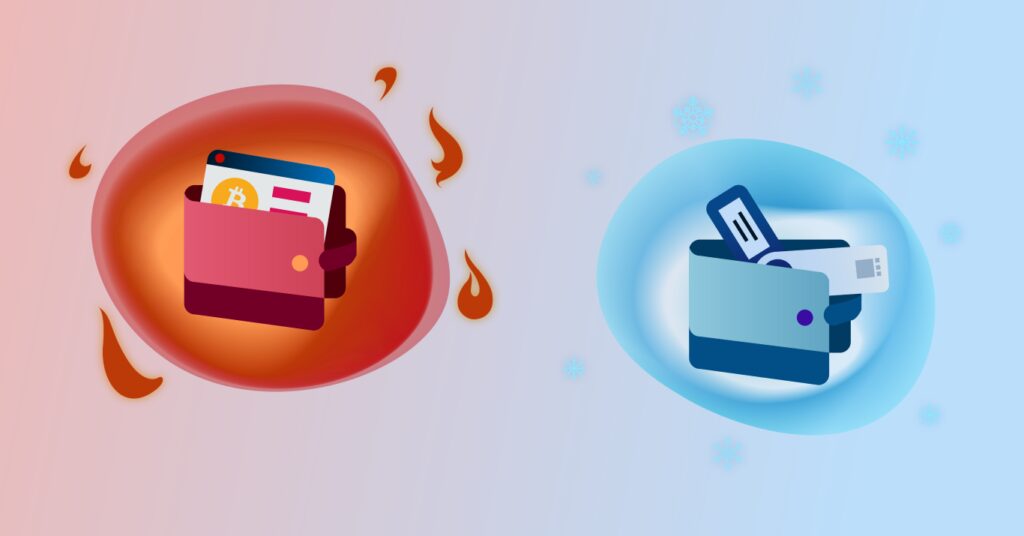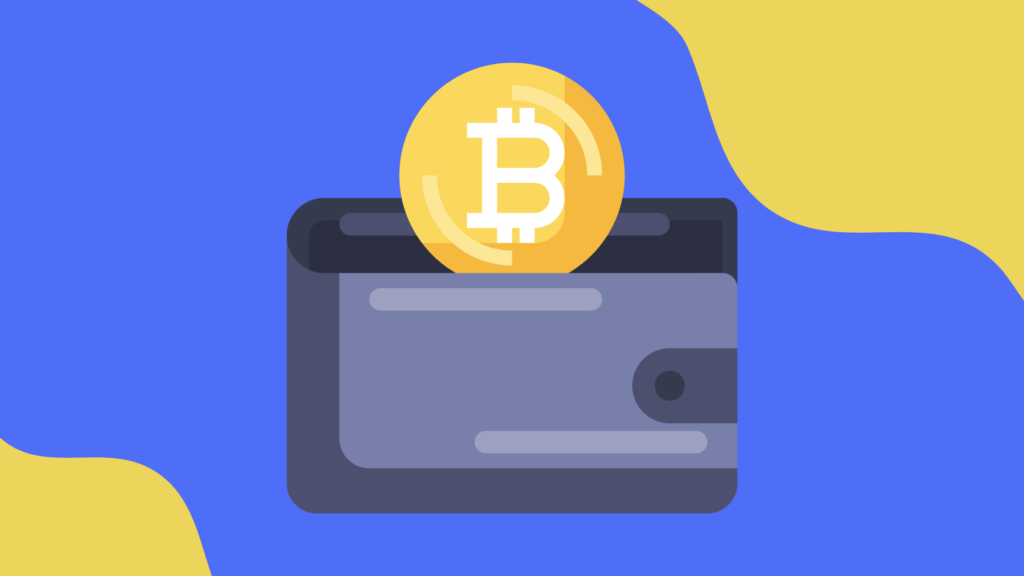
In the ever-evolving landscape of digital finance, cryptocurrency wallets have emerged as fundamental tools for the management and security of digital assets. These wallets, far more than mere storage solutions, play a pivotal role in the facilitation of secure transactions and the safeguarding of cryptographic keys that represent ownership of digital currencies.
Cryptocurrency wallets can be conceptualized as software programs or physical devices designed to store and manage blockchain-based assets. They serve as an interface to the blockchain, allowing users to send and receive digital currencies, as well as monitor their balance. Unlike traditional wallets that hold physical money, cryptocurrency wallets do not store actual coins or tokens. Instead, they maintain secure digital records of transactions on the blockchain, providing proof of ownership.
The essence of these wallets lies in their ability to manage private keys — unique, encrypted codes that grant access to the cryptocurrencies stored on the blockchain. The security and management of these keys are what differentiate various types of wallets, each tailored to specific needs and security levels.
This article delves into the diverse spectrum of cryptocurrency wallets, categorizing them based on their connectivity to the internet (hot and cold wallets), custodianship (custodial vs non-custodial), and specialized functionalities (like multi-signature and brain wallets). Understanding these categories is crucial for both novice and experienced users in the digital currency domain, as the choice of wallet can significantly impact the safety, accessibility, and convenience of managing crypto assets.
As we explore these types, we will highlight their distinct features, advantages, and potential drawbacks. Whether you are a casual user engaging in occasional transactions or a high-stakes trader demanding robust security, this guide aims to provide valuable insights for selecting the wallet that best suits your requirements in the dynamic world of cryptocurrency.
Table of Contents
Hot Wallets

Source: stakingbits.medium.com
In the realm of cryptocurrency management, hot wallets, including the commonly used crypto exchange wallet, stand out for their connectivity and ease of access. These wallets operate online, maintaining a constant connection to the internet, which facilitates swift transactions and real-time updates. Hot wallets are primarily software-based, encompassing various forms that cater to different access needs and platforms, with the bnb wallet being a notable example, often offering integrated trading features and enhanced user convenience.
- Web Wallets: Accessed through web browsers, these wallets offer the convenience of remote accessibility from any device with internet connectivity. Web wallets, such as those integrated with cryptocurrency exchanges, allow users to engage in trading and transactions seamlessly. However, this convenience comes with a caveat – they are susceptible to online threats like hacking and phishing.
- Mobile Wallets: Designed for on-the-go use, mobile wallets are smartphone applications that provide users with the ability to transact and manage their assets anywhere. Their user-friendly interfaces and QR code functionality for easy address sharing make them popular among everyday users. Nevertheless, their security is as robust as the security of the mobile device itself.
- Desktop Wallets: These are software applications installed on personal computers, offering a balance between accessibility and security. Desktop wallets grant users complete control over their keys and funds, independent of third-party platforms. However, they are vulnerable to malware and viruses if the host computer is compromised.
Hot wallets are characterized by their:
- Ease of Use: They have intuitive interfaces, making them user-friendly, especially for beginners in the cryptocurrency space.
- Rapid Transactions: Being online, they facilitate quick transfers, essential for active traders and regular transactions.
- Integration Features: Many hot wallets offer integrated trading and swapping features, enhancing the user experience.
However, the trade-off for these benefits is a lower level of security compared to cold wallets. The online nature of hot wallets makes them more exposed to cyber threats and online attacks. Users of hot wallets should be vigilant about security measures like using strong, unique passwords, enabling two-factor authentication, and regularly updating software to mitigate risks.
In summary, hot wallets are an ideal choice for users prioritizing ease of access and frequent transactions. They serve as a gateway to the dynamic world of cryptocurrencies, providing a balance of functionality and security for everyday use.
Cold Wallets
Cold wallets, in contrast to their hot counterparts, are distinguished by their offline nature, offering enhanced security for cryptocurrency storage. These wallets are not connected to the internet, thus significantly reducing the risk of cyber-attacks and unauthorized access. Cold wallets come in various forms, each providing a unique blend of security and usability.
- Hardware Wallets: These are physical devices, resembling USB drives, specifically engineered to store private keys securely. Hardware wallets, like Ledger or Trezor, keep private keys completely offline, only connecting to the internet momentarily to execute transactions. Their built-in screens enable users to verify and confirm transactions independently, adding an extra layer of security.
- Paper Wallets: As the name suggests, these wallets involve printing or writing down the cryptocurrency public addresses and private keys on paper. Paper wallets are entirely offline, providing immunity from online hacking attempts. However, they require careful handling and safekeeping to prevent loss or damage.
Cold wallets are characterized by their:
- Robust Security: The offline storage of private keys shields them from online vulnerabilities like hacking, phishing, or malware.
- Long-term Storage Solution: Ideal for ‘HODLing’ or long-term investment strategies, as they are less convenient for frequent transactions.
- Physical Control: Users have physical ownership and control of their private keys, eliminating reliance on third-party services.
However, the use of cold wallets also presents certain challenges:
- Accessibility: Cold wallets are less convenient for regular trading or daily transactions due to their offline nature.
- Risk of Physical Damage or Loss: Especially in the case of paper wallets, there’s a risk of physical deterioration or misplacement.
In essence, cold wallets are the fortresses of cryptocurrency security, designed for those prioritizing the safety of their digital assets over quick access and transactional fluidity. They are particularly suitable for investors holding significant amounts of cryptocurrency or those who prefer long-term storage away from the vulnerabilities associated with online storage solutions.
Custodial vs Non-Custodial Wallets

Source: alpaca.markets
The distinction between custodial and non-custodial wallets is pivotal in the realm of cryptocurrency management, centering around the control of private keys and, consequently, the access to and security of the crypto assets.
- Custodial Wallets:
- Definition: Custodial wallets are those in which the private keys are held by a third-party service, such as a cryptocurrency exchange. The user entrusts the security of their assets to the service provider.
- User Experience: These wallets often provide a user-friendly interface, making them accessible to beginners. They simplify the transaction process and offer integrated trading platforms.
- Security Concerns: While they relieve the user from the responsibility of securing their private keys, custodial wallets are susceptible to the risks associated with centralized services, including server downtime and potential internal security breaches.
- Recovery Options: In case of lost access credentials, users can recover their accounts through customer support, making them less prone to permanent loss due to forgotten keys.
- Non-Custodial Wallets:
- Definition: In non-custodial wallets, the user retains complete control over their private keys and, by extension, their cryptocurrency. This type of wallet does not rely on a third party for security.
- Personal Responsibility: The onus of securing the private keys rests entirely on the user. This requires a higher degree of crypto literacy and diligence in security practices.
- Security Advantage: As the private keys are not stored on a centralized server, non-custodial wallets are less vulnerable to hacking and centralized failures.
- Recovery Risk: If a user loses their private keys, there is no way to recover the wallet contents, emphasizing the need for rigorous backup procedures.
The choice between custodial and non-custodial wallets is essentially a trade-off between convenience and control. Custodial wallets offer ease of use and are often preferred by those new to cryptocurrency or those valuing convenience. In contrast, non-custodial wallets appeal to users seeking full control over their assets and those who are more security-conscious.
Both wallet types play crucial roles in the cryptocurrency ecosystem, catering to different user preferences and needs. This distinction underscores the diverse nature of digital asset management, reflecting the varying priorities and technical expertise of cryptocurrency users.
Specialized Wallets
Specialized wallets in the cryptocurrency domain cater to specific needs and advanced functionalities, offering unique features that go beyond the basic transaction and storage capabilities of standard wallets. These wallets are designed for users with particular requirements or those seeking enhanced security and functionality.
- Multi-Signature Wallets:
- Functionality: Multi-signature wallets, often referred to as multisig, require multiple private keys to authorize a single transaction. They function much like a safe deposit box, where two or more signatures (keys) are needed to access the contents.
- Use Cases: Ideal for businesses or groups where financial transactions require consent from multiple parties, enhancing security and reducing the risk of fraud or unauthorized access.
- Security Aspect: By distributing the authorization process, multisig wallets mitigate the risks associated with a single point of failure, making them less susceptible to theft or loss of a single private key.
- Brain Wallets:
- Concept: Brain wallets are a form of wallet where the user memorizes a seed phrase or private key, without physically recording it. This seed phrase is used to regenerate the wallet’s private keys.
- Security Considerations: While brain wallets eliminate the risk of physical theft, they are vulnerable to risks like memory loss and are susceptible to brute force attacks if the chosen phrase is not complex enough.
- Recommendation: They are generally recommended for highly experienced users who can ensure a sufficiently complex and memorable seed phrase.
- Hierarchical Deterministic (HD) Wallets:
- Mechanism: HD wallets generate a hierarchical tree-like structure of keys from a single seed. This feature allows for easy backup and restoration of the wallet from a single seed phrase.
- Benefits: They provide enhanced privacy by generating new addresses for every transaction, making transaction tracking more challenging.
Specialized wallets cater to the evolving needs of the diverse cryptocurrency community, offering solutions that range from heightened security protocols to sophisticated management tools. Their existence reflects the growing maturity of the cryptocurrency ecosystem, accommodating the nuanced demands of its user base.
Each of these specialized wallet types serves distinct purposes, appealing to a spectrum of users from security-focused individuals to collaborative groups and privacy-conscious traders. Their specialized nature, however, requires a deeper understanding of cryptocurrency mechanics, making them more suited to advanced users. By providing these niche services, specialized wallets play a critical role in the broader adoption and functional versatility of cryptocurrency management.
Choosing the Right Wallet

Source: bitpay.com
Selecting the appropriate cryptocurrency wallet is a decision that hinges on various factors, each aligning with the user’s specific needs, security concerns, and transaction habits. The diversity of wallet types, from hot and cold to custodial and non-custodial, each offers distinct features and levels of security. Here, we outline key considerations to guide users in choosing the wallet that best suits their requirements.
- Assessing Security Needs:
- Risk Tolerance: For those prioritizing security above all else, especially with substantial crypto holdings, cold wallets (like hardware or paper wallets) offer the highest security against online threats.
- Control Over Private Keys: Users seeking complete control over their funds should opt for non-custodial wallets, where they are solely responsible for their private keys.
- Frequency of Transactions:
- Active Traders: Individuals who frequently trade or require regular access to their crypto assets might find hot wallets (web, mobile, or desktop) more convenient, as they offer ease of transactions and quick access.
- Long-Term Investors: For users focused on long-term investment, cold wallets provide a more secure solution for holding assets over an extended period.
- Ease of Use:
- Beginner-Friendly Options: Newcomers to the cryptocurrency space may lean towards user-friendly custodial wallets, often provided by exchanges, as they offer a straightforward interface and easy recovery options.
- Advanced Features: Experienced users might prefer wallets with advanced features like multi-signature support or Hierarchical Deterministic (HD) structures for added security and privacy.
- Backup and Recovery Options:
- Recovery Mechanisms: Ensure the wallet provides reliable backup and recovery options. Non-custodial wallets should offer a secure seed phrase for recovery, which needs to be stored safely.
- Compatibility and Integration:
- Device Compatibility: Check if the wallet is compatible with your operating system and devices.
- Integration with Other Services: Consider if the wallet integrates well with other services you use, like exchanges or DeFi platforms.
- Community and Developer Support:
Active Development: Opt for wallets that are regularly updated and supported by a robust developer community.- Community Trust: Research community feedback and trust levels in the wallet, considering aspects like historical security performance and responsiveness to issues.
In summary, choosing the right cryptocurrency wallet is a personalized decision that should be made after carefully considering one’s individual needs and preferences. It’s crucial to balance factors like security, convenience, frequency of use, and technical comfort level. A well-chosen wallet not only provides peace of mind but also enhances the overall experience in managing digital assets.
The exploration of various types of cryptocurrency wallets – hot and cold, custodial and non-custodial, along with specialized wallets – underscores the multifaceted nature of digital asset management. Each wallet type presents a unique combination of features, security levels, and user experiences, catering to the diverse needs of the cryptocurrency community.
- Key Takeaways:
- Security vs. Convenience: The primary dichotomy in wallet types revolves around the trade-off between security and convenience. Cold wallets offer enhanced security but at the cost of accessibility, while hot wallets provide ease of use with a slightly elevated risk profile.
- User Autonomy: Non-custodial wallets empower users with full control over their assets, emphasizing the importance of personal responsibility in safeguarding private keys.
- Innovation and Adaptability: Specialized wallets like multisig and HD wallets demonstrate the industry’s innovation, offering solutions for complex needs such as enhanced security and privacy.
Final Thoughts:

Source: zipmex.com
Personalized Choice: The decision on which wallet to use should align with individual requirements, transaction habits, and technical expertise. There is no one-size-fits-all solution in the selection of a cryptocurrency wallet.
Dynamic Landscape: As the cryptocurrency landscape continues to evolve, so do the features and security measures of wallets. Staying informed and adapting to new developments is crucial for effective digital asset management.
Risk Awareness: Regardless of the wallet chosen, maintaining an acute awareness of security practices and the inherent risks of digital currencies is paramount.
In conclusion, the world of cryptocurrency wallets is as varied as it is complex. From the security-focused cold wallets to the user-friendly hot wallets, and the autonomous non-custodial wallets to the innovative specialized ones, the choices are abundant. Users must weigh their options carefully, considering factors like security, convenience, control, and personal cryptocurrency management needs. By making an informed decision, individuals can ensure a more secure and efficient experience in the ever-expanding domain of digital currencies.







